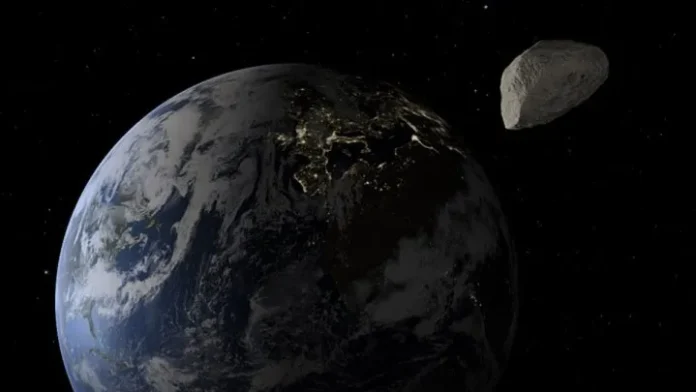NASA has announced that a 300-meter-wide asteroid named Apophis, after the Egyptian god of chaos and destruction, will approach Earth in 2029. The agency aims to seize this opportunity for observation and study.
The Apophis asteroid, named after the Egyptian god of chaos and destruction, will pass within just 48,300 kilometers of Earth before the end of this decade. To put this in perspective, the Moon is approximately 384,400 kilometers away from Earth. It is predicted that on April 13, 2029, a Friday, the asteroid will be visible to the naked eye. Scientists, however, are not willing to let such a rare event pass by without thorough examination.

Apophis has been on the European Space Agency (ESA) and NASA’s list of potentially hazardous asteroids for 17 years. However, analyses indicate that Apophis will not collide with Earth within the next 100 years.
NASA’s Interest in Studying the Asteroid
NASA plans to closely examine Apophis in 2029 using the OSIRIS-REx spacecraft. Additionally, a team led by space engineer Hakan Kayal from Julius-Maximilians-Universität Würzburg has proposed three concepts under the “NEAlight” project for such space missions. If successful, NASA intends to send a small satellite to accompany Apophis for weeks as it flies towards Earth, as per the first concept. The team’s second concept involves launching a larger and more equipped spacecraft named RAMSES, planned by ESA, which could also carry the small satellite from the first concept.
NASA’s objective is to capitalize on this rare event, occurring once every few centuries. The agency aims to gather data that will help scientists better understand the Solar System and potentially develop defense measures against hazardous asteroids.
Despite our awareness of approximately 1.3 million asteroids in the Solar System, with 2,500 of them considered potentially hazardous, we still possess limited information about these celestial bodies. To date, only 20 missions, including OSIRIS-REx, Japan’s Hayabusa1 and Hayabusa2 spacecraft, ESA’s Rosetta probe, and NASA’s Lucy mission, have been conducted to closely study these asteroids.

